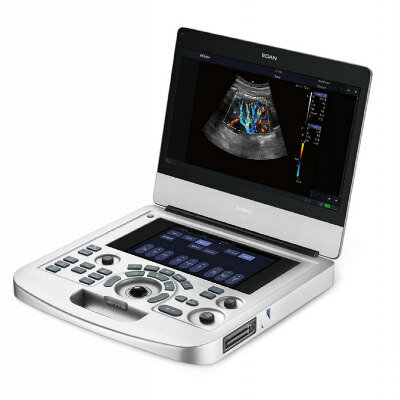Personalized Intraoperative Radiation Therapy During Cancer Surgery
|
By MedImaging International staff writers Posted on 09 Sep 2014 |
A New York City Medical Center is finding new ways to employ personalized, internal radiation delivered in the operating room right after a cancer tumor is removed. Intraoperative radiotherapy (IORT) represents an effort to reduce the risk of a recurrence, lessen the duration of standard postoperative external radiation, and reduce the risk to healthy tissue associated with external radiation.
NewYork-Presbyterian Hospital Medical Center (New York, NY, USA), in 2012, became the first hospital in New York City to offer IORT to women with certain breast cancers. In this therapy, a spherical applicator is used to deliver a single, even dose of radiation to the inside surface of a rounded cavity after a lumpectomy.
Now, physicians at NewYork-Presbyterian/Columbia are expanding these innovating efforts by offering IORT for other types of cancer in the abdomen and pelvis. Unlike that in the breast, the tumor bed in the abdomen and pelvis may not be as precisely defined after surgery, and several sites at risk for recurrence may need to be treated.
Earlier in 2014, in the hospital’s first case of using IORT for a cancer other than breast cancer, a woman with recurrent colon cancer in the pelvic cavity needed to have treatment to separate areas of her body. The surgeon, Ravi Kiran, MD, a professor of surgery (in epidemiology) and chief of colorectal surgery at NewYork-Presbyterian/Columbia, removed the tumor, but could not cut too close to major blood vessels and other organs. Because of the fundamental limitations of surgery, and because the patient had already received a high lifetime cumulative dose of radiation therapy in earlier treatments, Dr. Kiran and Clifford Chao, MD, a professor of radiation oncology and chair of radiation oncology at NewYork-Presbyterian/Columbia, decided to use IORT to “mop up” any reamining tumor cells. Dr. Chao used a flat radiotherapy applicator to deliver radiation to areas close to blood vessels along the pelvic wall and a spherical applicator to treat a region lower in the pelvic cavity. “We also used a protective wrap, or draping, made of material that shields organs like the bowel or blood vessels from scatter radiation,” Dr. Chao said.
In a second procedure, which involved a 23-year-old woman with a bile duct tumor, two differently shaped applicators were used to deliver IORT to the retroperitoneal tissue after removal of the tumor and nearby lymph nodes. The surgery, performed by Tomoaki Kato, MD, a professor of surgical oncology and chief of abdominal organ transplantation at NewYork-Presbyterian/Columbia, was the first case in the United States to use Zeiss Intrabeam flat applicators after removal of a bile duct tumor. The flat applicator was used to deliver radiation to the surface where the retroperitoneal aortic lymph node had been. A sphere-shaped applicator was inserted into the right lobe of the liver near the hepatic artery, where the soft organ could completely surround the tiny globe and absorb a 20–30 minute, low-dose IORT session.
“Because of the way the tumor needs to be removed, or because the spaces between a tumor and large vessels and nerves are too small, microscopic lesions are more likely to be attached to the surface of blood vessels and nerves. IORT allows us to treat those areas and lower the risk of recurrence,” said Dr. Chao, who performed the radiation therapy procedure and is leading the hospital’s IORT efforts.
In a third patient, Jason Wright, MD, a professor of Women’s Health (in obstetrics and gynecology) and chief of gynecologic oncology at NewYork-Presbyterian/Columbia, used a similar approach to treat a gynecologic cancer, working with Dr. Chao. In specific breast cancer patients, IORT has eliminated an additional six to seven weeks of radiotherapy, and according to a 10-year randomized trial published in 2010, provided the same results as traditional full-breast radiation. Dr. Chao is hopeful that similar benefits will be seen in other types of cancer cases, and he sees this as another step toward customized cancer care.
“The possibilities are encouraging,” said Dr. Chao. “We could see patients ahead of time and then work with the surgeon to develop a personalized radiation treatment for the specific tumor. When you open up the abdomen to remove a tumor from the liver, bowel, or pancreas, the terrain of the surgical bed is a more open, uneven surface. So we need radiotherapy applicators that suit the specific anatomical terrain. In some areas of the body, the applicator could be a half sphere, an irregular shape for uneven surfaces, or a tiny device that fits into a small space where we have anatomic challenges. We can devise personalized therapy based on a patient’s specific anatomy.”
Dr. Chao is currently working with engineers and physicists from NewYork Presbyterian/Columbia and NewYork-Presbyterian/Weill Cornell Medical Center to design and develop applicators for colorectal, head and neck, lung, and gynecologic cancers.
Zeiss Intrabeam, developed by Carl Zeiss (Oberkochen, Germany), is a mobile radiation oncology platform that offers additional treatment options for a wide range of cancer types, through use of its US Food and Drug Administration (FDA)-cleared spherical, needle, flat, and surface applicators. Because of the low X-ray energy, Intrabeam does not require any complicated radiation shielding measures and is suitable even for mobile use.
Related Links:
NewYork-Presbyterian Hospital Medical Center
Carl Zeiss
NewYork-Presbyterian Hospital Medical Center (New York, NY, USA), in 2012, became the first hospital in New York City to offer IORT to women with certain breast cancers. In this therapy, a spherical applicator is used to deliver a single, even dose of radiation to the inside surface of a rounded cavity after a lumpectomy.
Now, physicians at NewYork-Presbyterian/Columbia are expanding these innovating efforts by offering IORT for other types of cancer in the abdomen and pelvis. Unlike that in the breast, the tumor bed in the abdomen and pelvis may not be as precisely defined after surgery, and several sites at risk for recurrence may need to be treated.
Earlier in 2014, in the hospital’s first case of using IORT for a cancer other than breast cancer, a woman with recurrent colon cancer in the pelvic cavity needed to have treatment to separate areas of her body. The surgeon, Ravi Kiran, MD, a professor of surgery (in epidemiology) and chief of colorectal surgery at NewYork-Presbyterian/Columbia, removed the tumor, but could not cut too close to major blood vessels and other organs. Because of the fundamental limitations of surgery, and because the patient had already received a high lifetime cumulative dose of radiation therapy in earlier treatments, Dr. Kiran and Clifford Chao, MD, a professor of radiation oncology and chair of radiation oncology at NewYork-Presbyterian/Columbia, decided to use IORT to “mop up” any reamining tumor cells. Dr. Chao used a flat radiotherapy applicator to deliver radiation to areas close to blood vessels along the pelvic wall and a spherical applicator to treat a region lower in the pelvic cavity. “We also used a protective wrap, or draping, made of material that shields organs like the bowel or blood vessels from scatter radiation,” Dr. Chao said.
In a second procedure, which involved a 23-year-old woman with a bile duct tumor, two differently shaped applicators were used to deliver IORT to the retroperitoneal tissue after removal of the tumor and nearby lymph nodes. The surgery, performed by Tomoaki Kato, MD, a professor of surgical oncology and chief of abdominal organ transplantation at NewYork-Presbyterian/Columbia, was the first case in the United States to use Zeiss Intrabeam flat applicators after removal of a bile duct tumor. The flat applicator was used to deliver radiation to the surface where the retroperitoneal aortic lymph node had been. A sphere-shaped applicator was inserted into the right lobe of the liver near the hepatic artery, where the soft organ could completely surround the tiny globe and absorb a 20–30 minute, low-dose IORT session.
“Because of the way the tumor needs to be removed, or because the spaces between a tumor and large vessels and nerves are too small, microscopic lesions are more likely to be attached to the surface of blood vessels and nerves. IORT allows us to treat those areas and lower the risk of recurrence,” said Dr. Chao, who performed the radiation therapy procedure and is leading the hospital’s IORT efforts.
In a third patient, Jason Wright, MD, a professor of Women’s Health (in obstetrics and gynecology) and chief of gynecologic oncology at NewYork-Presbyterian/Columbia, used a similar approach to treat a gynecologic cancer, working with Dr. Chao. In specific breast cancer patients, IORT has eliminated an additional six to seven weeks of radiotherapy, and according to a 10-year randomized trial published in 2010, provided the same results as traditional full-breast radiation. Dr. Chao is hopeful that similar benefits will be seen in other types of cancer cases, and he sees this as another step toward customized cancer care.
“The possibilities are encouraging,” said Dr. Chao. “We could see patients ahead of time and then work with the surgeon to develop a personalized radiation treatment for the specific tumor. When you open up the abdomen to remove a tumor from the liver, bowel, or pancreas, the terrain of the surgical bed is a more open, uneven surface. So we need radiotherapy applicators that suit the specific anatomical terrain. In some areas of the body, the applicator could be a half sphere, an irregular shape for uneven surfaces, or a tiny device that fits into a small space where we have anatomic challenges. We can devise personalized therapy based on a patient’s specific anatomy.”
Dr. Chao is currently working with engineers and physicists from NewYork Presbyterian/Columbia and NewYork-Presbyterian/Weill Cornell Medical Center to design and develop applicators for colorectal, head and neck, lung, and gynecologic cancers.
Zeiss Intrabeam, developed by Carl Zeiss (Oberkochen, Germany), is a mobile radiation oncology platform that offers additional treatment options for a wide range of cancer types, through use of its US Food and Drug Administration (FDA)-cleared spherical, needle, flat, and surface applicators. Because of the low X-ray energy, Intrabeam does not require any complicated radiation shielding measures and is suitable even for mobile use.
Related Links:
NewYork-Presbyterian Hospital Medical Center
Carl Zeiss
Read the full article by registering today, it's FREE! 

Register now for FREE to MedImaging.net and get access to news and events that shape the world of Radiology. 
- Free digital version edition of Medical Imaging International sent by email on regular basis
- Free print version of Medical Imaging International magazine (available only outside USA and Canada).
- Free and unlimited access to back issues of Medical Imaging International in digital format
- Free Medical Imaging International Newsletter sent every week containing the latest news
- Free breaking news sent via email
- Free access to Events Calendar
- Free access to LinkXpress new product services
- REGISTRATION IS FREE AND EASY!
Sign in: Registered website members
Sign in: Registered magazine subscribers
Latest Radiography News
- Novel Breast Imaging System Proves As Effective As Mammography
- AI Assistance Improves Breast-Cancer Screening by Reducing False Positives
- AI Could Boost Clinical Adoption of Chest DDR
- 3D Mammography Almost Halves Breast Cancer Incidence between Two Screening Tests
- AI Model Predicts 5-Year Breast Cancer Risk from Mammograms
- Deep Learning Framework Detects Fractures in X-Ray Images With 99% Accuracy
- Direct AI-Based Medical X-Ray Imaging System a Paradigm-Shift from Conventional DR and CT
- Chest X-Ray AI Solution Automatically Identifies, Categorizes and Highlights Suspicious Areas
- AI Diagnoses Wrist Fractures As Well As Radiologists
- Annual Mammography Beginning At 40 Cuts Breast Cancer Mortality By 42%
- 3D Human GPS Powered By Light Paves Way for Radiation-Free Minimally-Invasive Surgery
- Novel AI Technology to Revolutionize Cancer Detection in Dense Breasts
- AI Solution Provides Radiologists with 'Second Pair' Of Eyes to Detect Breast Cancers
- AI Helps General Radiologists Achieve Specialist-Level Performance in Interpreting Mammograms
- Novel Imaging Technique Could Transform Breast Cancer Detection
- Computer Program Combines AI and Heat-Imaging Technology for Early Breast Cancer Detection
Channels
MRI
view channel
PET/MRI Improves Diagnostic Accuracy for Prostate Cancer Patients
The Prostate Imaging Reporting and Data System (PI-RADS) is a five-point scale to assess potential prostate cancer in MR images. PI-RADS category 3 which offers an unclear suggestion of clinically significant... Read more
Next Generation MR-Guided Focused Ultrasound Ushers In Future of Incisionless Neurosurgery
Essential tremor, often called familial, idiopathic, or benign tremor, leads to uncontrollable shaking that significantly affects a person’s life. When traditional medications do not alleviate symptoms,... Read more
Two-Part MRI Scan Detects Prostate Cancer More Quickly without Compromising Diagnostic Quality
Prostate cancer ranks as the most prevalent cancer among men. Over the last decade, the introduction of MRI scans has significantly transformed the diagnosis process, marking the most substantial advancement... Read moreUltrasound
view channel
Deep Learning Advances Super-Resolution Ultrasound Imaging
Ultrasound localization microscopy (ULM) is an advanced imaging technique that offers high-resolution visualization of microvascular structures. It employs microbubbles, FDA-approved contrast agents, injected... Read more
Novel Ultrasound-Launched Targeted Nanoparticle Eliminates Biofilm and Bacterial Infection
Biofilms, formed by bacteria aggregating into dense communities for protection against harsh environmental conditions, are a significant contributor to various infectious diseases. Biofilms frequently... Read moreNuclear Medicine
view channel
New SPECT/CT Technique Could Change Imaging Practices and Increase Patient Access
The development of lead-212 (212Pb)-PSMA–based targeted alpha therapy (TAT) is garnering significant interest in treating patients with metastatic castration-resistant prostate cancer. The imaging of 212Pb,... Read moreNew Radiotheranostic System Detects and Treats Ovarian Cancer Noninvasively
Ovarian cancer is the most lethal gynecological cancer, with less than a 30% five-year survival rate for those diagnosed in late stages. Despite surgery and platinum-based chemotherapy being the standard... Read more
AI System Automatically and Reliably Detects Cardiac Amyloidosis Using Scintigraphy Imaging
Cardiac amyloidosis, a condition characterized by the buildup of abnormal protein deposits (amyloids) in the heart muscle, severely affects heart function and can lead to heart failure or death without... Read moreGeneral/Advanced Imaging
view channel
New AI Method Captures Uncertainty in Medical Images
In the field of biomedicine, segmentation is the process of annotating pixels from an important structure in medical images, such as organs or cells. Artificial Intelligence (AI) models are utilized to... Read more.jpg)
CT Coronary Angiography Reduces Need for Invasive Tests to Diagnose Coronary Artery Disease
Coronary artery disease (CAD), one of the leading causes of death worldwide, involves the narrowing of coronary arteries due to atherosclerosis, resulting in insufficient blood flow to the heart muscle.... Read more
Novel Blood Test Could Reduce Need for PET Imaging of Patients with Alzheimer’s
Alzheimer's disease (AD), a condition marked by cognitive decline and the presence of beta-amyloid (Aβ) plaques and neurofibrillary tangles in the brain, poses diagnostic challenges. Amyloid positron emission... Read more.jpg)
CT-Based Deep Learning Algorithm Accurately Differentiates Benign From Malignant Vertebral Fractures
The rise in the aging population is expected to result in a corresponding increase in the prevalence of vertebral fractures which can cause back pain or neurologic compromise, leading to impaired function... Read moreImaging IT
view channel
New Google Cloud Medical Imaging Suite Makes Imaging Healthcare Data More Accessible
Medical imaging is a critical tool used to diagnose patients, and there are billions of medical images scanned globally each year. Imaging data accounts for about 90% of all healthcare data1 and, until... Read more
Global AI in Medical Diagnostics Market to Be Driven by Demand for Image Recognition in Radiology
The global artificial intelligence (AI) in medical diagnostics market is expanding with early disease detection being one of its key applications and image recognition becoming a compelling consumer proposition... Read moreIndustry News
view channel
Bayer and Google Partner on New AI Product for Radiologists
Medical imaging data comprises around 90% of all healthcare data, and it is a highly complex and rich clinical data modality and serves as a vital tool for diagnosing patients. Each year, billions of medical... Read more





















